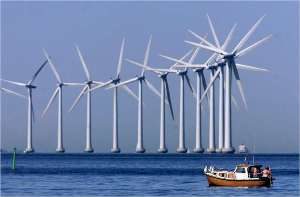
Wind power is the conversion of wind into usable forms of energy. In all forms, it goes back in history to the first sailing boats. In the form of electric power generation, wind power is not nearly as old as that, but does go back to the late 19th century. In 1887, Professor James Blyth of Glasgow used a cloth-
During the late 20th and early 21st centuries, wind power grew from a curiosity to a major provider of green energy for both residential and business use. Over that time, the efficiency of turbine design has improved dramatically. Wind energy is today one of the most economical form of renewable energy and has become a significant portion of global electricity generation.
Wind Farms
Most wind electricity is produced from wind farms. These are large-
Home Wind Energy Generation
Although most wind electricity is generated commercially in large installations, it is also possible to use wind power on a home-
use.
In many countries, the installation of a home wind or solar power system makes one eligible for tax credits or deductions, or other subsidies designed by governments to encourage the use of renewable energy and improved energy efficiency. There are restrictions applied to these credits, however, and it’s important to research whether the system you mean to install falls within those restrictions. The same is true with regard to building codes and homeowner’s insurance policies. Building codes in most places do accommodate home energy systems, but again there are restrictions and it’s important to know what these are before proceeding.
Pros & Cons
The biggest single downside to installing a home wind power system is the up-
It’s also important to research whether wind conditions in your area are appropriate for wind energy generation. This refers to how strongly and regularly the prevailing winds blow, and also how far above the ground it’s necessary to raise the blades of the windmill in order to reach them. Not every part of the world is suitable for wind power.
Finally, it’s important to recognize that wind power requires regular maintenance to keep the system operating at acceptable efficiencies. A windmill is a machine with moving parts that wear out. The components of a wind power system need to be inspected periodically and may from time to time need repairs or replacement. Realistic projections of maintenance costs should be made and included in your economic models before you decide to install a solar wind energy system.
